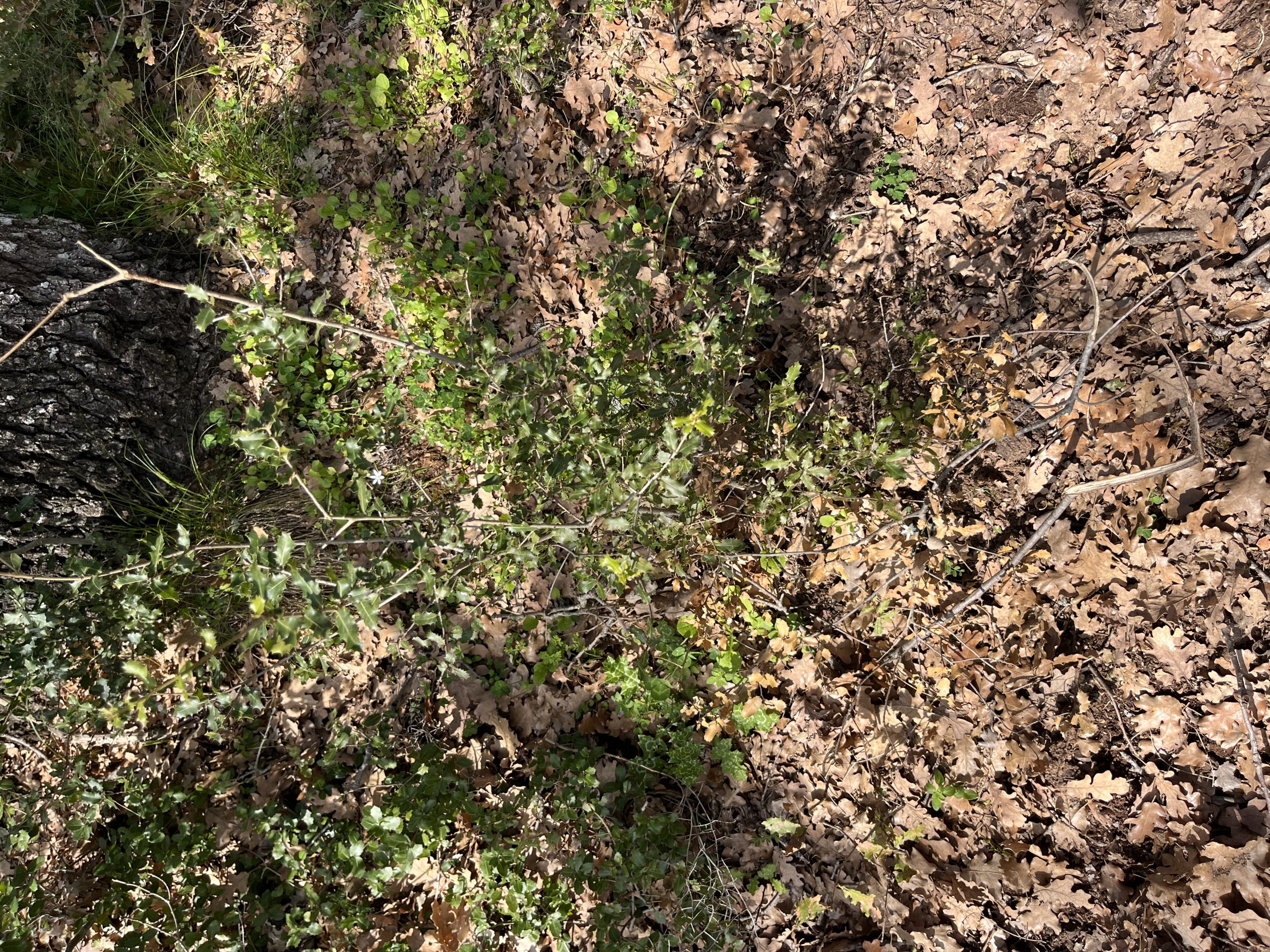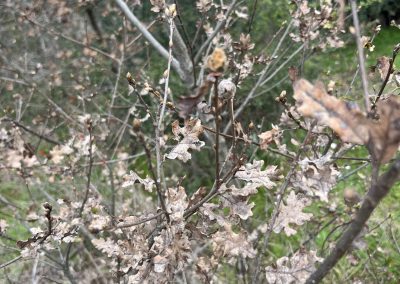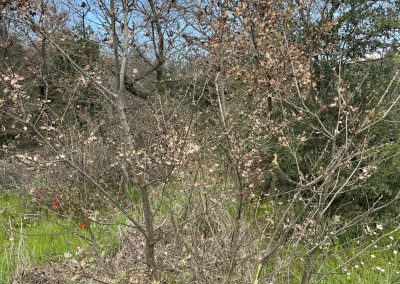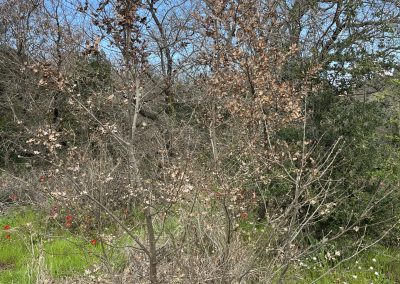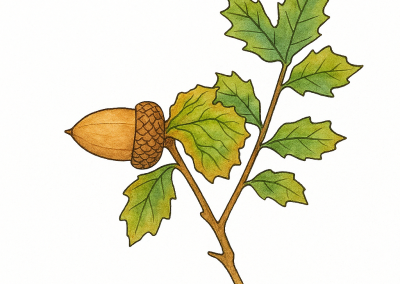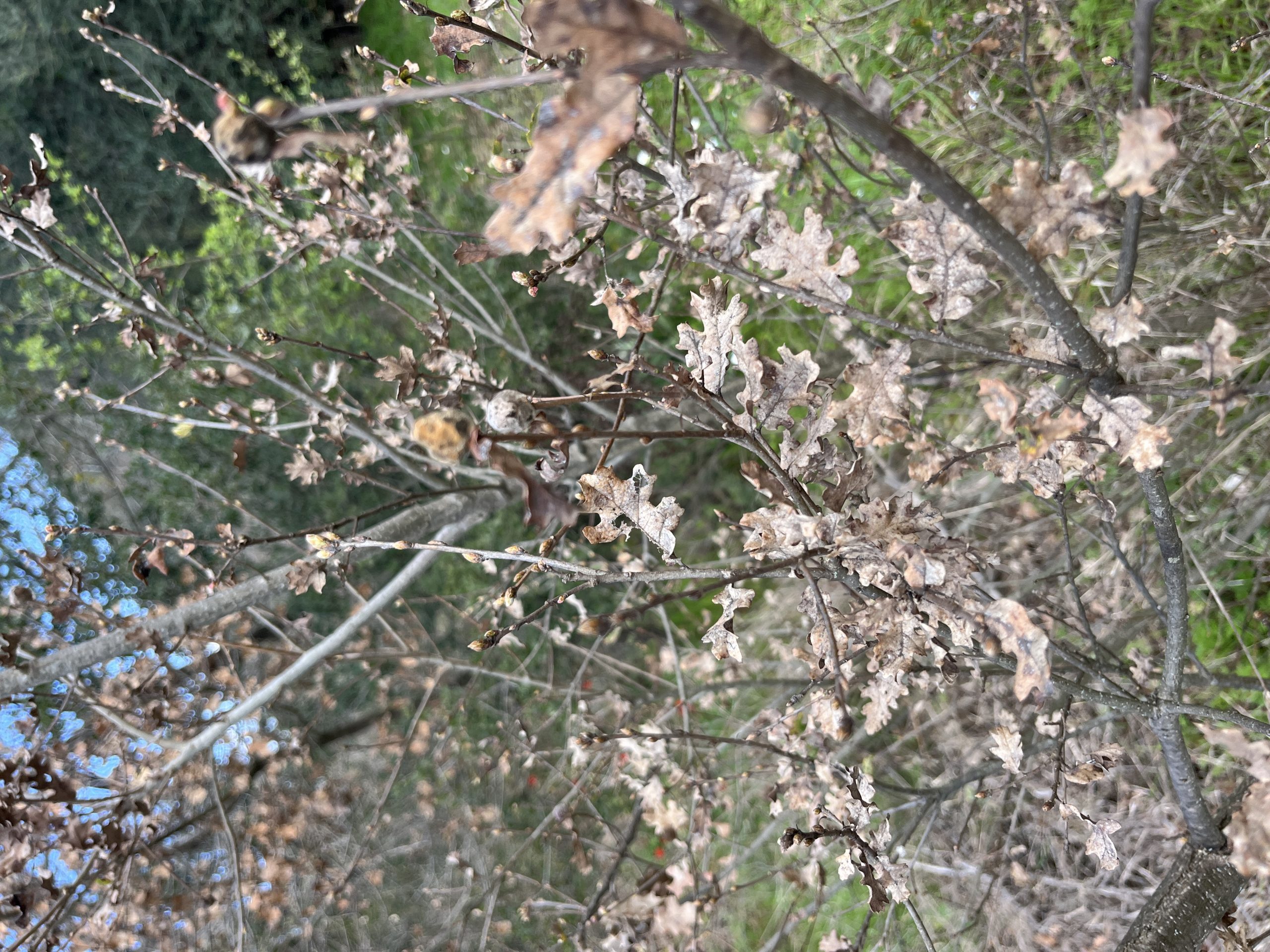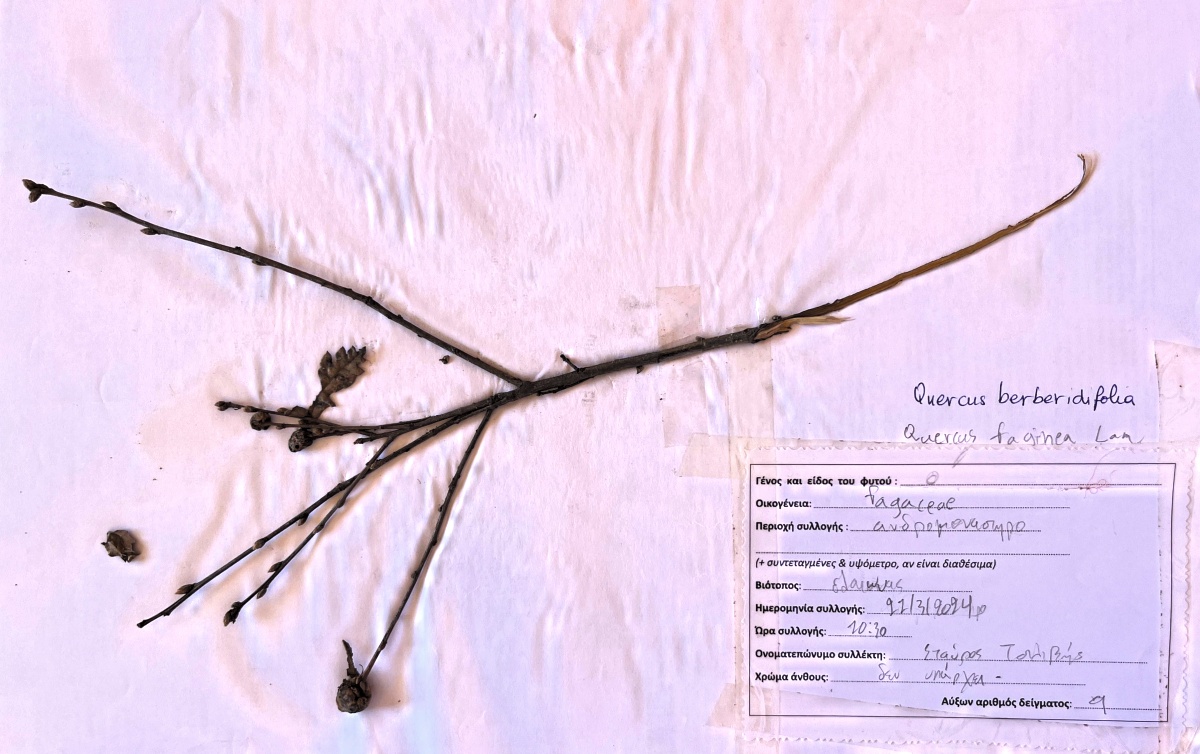Quercus berberidifolia
Scientific description
Scientific name: Quercus berberidifolia
Common name: California Scrub Oak
Kingdom: Plantae
Clade: Tracheophytes, Angiosperms, Eudicots
Series: Clades
Family: Fagaceae
Genus: Quercus
Species: Quercus berberidifolia
Origin:
Native to California, United States.
Description:
Quercus berberidifolia is a small evergreen or semi-evergreen shrubby oak, growing 1–2 m tall, rarely up to 4 m. Leaves are dull green, sharply toothed, 1.5–3 cm long and 1–2 cm wide, leathery above and slightly hairy underneath. Acorns are brown, solitary or paired, 1–3 cm long, 1–2 cm wide, pointed or egg-shaped with thin caps, maturing in 6–8 months. In cooler or exposed areas it remains compact; in warm or sheltered areas it can spread several meters.
Propagation:
By sowing seeds after refrigeration when mature or by grafting.
Ecology:
Found in shrubby habitats.
Usage:
• Medicinal: used in folk medicine to treat gastrointestinal disorders, diarrhea, hemorrhoids.
• Traditional: Indigenous peoples use it as antiseptic.
Επιστημονική ονομασία: Quercus berberidifolia
Κοινή ονομασία: Βελανιδιά της Καλιφόρνια, θαμνώδης βελανιδιά
Βασίλειο: Φυτά
Clade: Τραχειόφυτα, Αγγειόσπερμα, Eudicots
Σειρά: Φαγάλες
Οικογένεια: Fagaceae
Γένος: Quercus
Είδος: Quercus berberidifolia
Καταγωγή:
Ενδημικό στην Καλιφόρνια, Ηνωμένες Πολιτείες.
Περιγραφή:
Μικρή αειθαλής ή ημι-αειθαλής θαμνώδης βελανιδιά, ύψος 1–2 μ., σπάνια έως 4 μ. Φύλλα θαμπά πράσινα, έντονα οδοντωτά, 1,5–3 cm μήκος και 1–2 cm πλάτος, δερματώδη στην επάνω επιφάνεια και ελαφρώς τριχωτά από κάτω. Καφέ βελανίδια, μοναχικά ή ζευγαρωμένα, 1–3 cm μήκος και 1–2 cm πλάτος, μυτερά ή αυγοειδή με λεπτά καπάκια, ωριμάζουν σε 6–8 μήνες. Σε ψυχρές ή εκτεθειμένες περιοχές παραμένει συμπαγές· σε ζεστές ή προστατευμένες περιοχές μπορεί να απλωθεί αρκετά μέτρα.
Πολλαπλασιασμός:
Με σπορά σπόρων μετά από ψύξη ή με εμβολιασμό.
Οικολογία:
Βρίσκεται σε θαμνώδεις οικοτόπους.
Χρήση:
- Φαρμακευτικό: λαϊκή χρήση για διαταραχές πεπτικού συστήματος, διάρροια, αιμορροΐδες.
- Παραδοσιακό: αντισηπτική χρήση από αυτόχθονες πληθυσμούς.
Nom scientifique : Quercus berberidifolia
Nom commun : Chêne des broussailles de Californie
Règne : Plantae
Clade : Tracheophytes, Angiospermes, Eudicots
Série : Clades
Famille : Fagaceae
Genre : Quercus
Espèce : Quercus berberidifolia
Origine:
Originaire de Californie, États-Unis.
Description:
Petit chêne arbustif persistant ou semi-persistant, 1–2 m de haut, rarement 4 m. Feuilles vert mat, fortement dentées, 1,5–3 cm long, 1–2 cm large, coriaces au-dessus et légèrement velues en dessous. Glands bruns, solitaires ou en paires, 1–3 cm long, 1–2 cm large, pointus ou ovoïdes, maturation 6–8 mois. Dans les zones fraîches ou exposées, compact ; dans les zones chaudes ou abritées, peut atteindre plusieurs mètres.
Propagation :
Par semis après réfrigération ou par greffage.
Écologie:
On les trouve dans les habitats arbustifs.
Utilisation:
• Médicinale : traitement traditionnel des troubles digestifs, diarrhée, hémorroïdes.
• Traditionnelle : antiseptique utilisé par les populations indigènes.
Denumire științifică: Quercus berberidifolia
Denumire comună: Stejar pitic de California
Regn: Plantae
Cladă: Tracheophytes, Angiosperme, Eudicotiledonate
Familie: Fagaceae
Gen: Quercus
Specie: Quercus berberidifolia
Origine:
Arbust originar din California, Statele Unite.
Descriere:
Stejar mic, veșnic verde sau semi-veșnic verde, 1–2 m înălțime, rar până la 4 m. Frunze verde-mat, cu margini adânc dințate, 1,5–3 cm lungime și 1–2 cm lățime, piele deasupra și ușor păroase dedesubt. Ghinde maro, solitare sau în perechi, 1–3 cm lungime și 1–2 cm lățime, conice sau ovoide, maturare în 6–8 luni. În zone reci sau expuse, compact; în zone calde sau adăpostite, poate ajunge la câțiva metri.
Propagare:
Prin semințe după refrigerare sau prin altoire.
Ecologie:
Specia crește în habitate de tufăriș.
Utilizare:
● Medicinală: tratamente tradiționale pentru tulburări digestive, diaree, hemoroizi.
● Tradițională: antiseptic folosit de populațiile indigene.
Creative writing inspired by Quercus berberidifolia
Quercus berberidifolia — The Forest God’s Sacrifice
In ancient times, when the land of California was still young and wild, there was a god of forests and mountains named Quercus. Quercus was the protector of trees and the creatures that lived in the dense forests of the region. Every year during spring, he held celebrations to honor nature and bring rain to nourish the earth.
One day, California was struck by a terrible drought. The forests and valleys withered, and the animals were parched. Heartbroken, Quercus decided to make a sacrifice to save the land. He climbed to the top of a high mountain and pleaded with the celestial gods for help. In response, the gods told him that to bring the blessing of rain, he had to offer something precious: himself.
Quercus accepted, and as his spirit merged with the land, his body transformed into a strong tree—the California scrub oak. His roots stretched deep into the earth, drawing water and reviving life across the land. The gods, moved by his self-sacrifice, sent rain, and the forests were filled with life once again.
Since then, the California scrub oak (Quercus berberidifolia) has symbolized the strength and resilience of nature. Its acorns nourish the creatures of the earth, while its broad branches offer shade and shelter, reminding all of the eternal sacrifice of the forest god.


